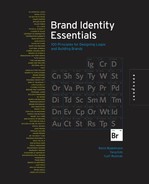51 Macro Trends
Macro trends in brand identity are tied to trends in business models and lifestyles.
Consider the rise of the McDonald’s brand and the value proposition of easily accessible, inexpensive fast food. Beginning with its founding in 1948, McDonald’s developed a breakthrough business model that many other restaurant chains copied. As such, it helped define a category.
McDonald’s brand identity remained successful for decades, but has been challenged in recent years by industry rivals such as Subway, which built a new brand around healthier lifestyle trends. Similarly, the rise of Starbucks Coffee Company reflects a set of brand characteristics that center on food quality and a sense of community. Neither Subway nor Starbucks could have existed without McDonald’s before them. Likewise, from menu variety to store design, the experience of a McDonald’s restaurant anywhere in the world today has been shaped in part by macro trends that Subway and Starbucks capitalized on first.
All living brands react to macro trends—and yes, no reaction is a type of reaction. The most effective brands translate these trends into meaning, and deliver more meaningful experiences to customers as a result.
Photos: Flickr users AchimH, thetruthabout

The drive-thru experience.
AARP
Siegel+Gale
Howard Belk, Anne Swan, Clinton Clarke, Steve Kim, Lana Roulhac, Frank Oswald, Jenifer Brooks, Hayley Berlent
AARP no longer targets retired people exclusively, and no longer does the organization see its name as an acronym (it formerly stood for the American Association of Retired Persons). The brand is a trendsetter in the United States, with great influence on how older Americans view themselves.

